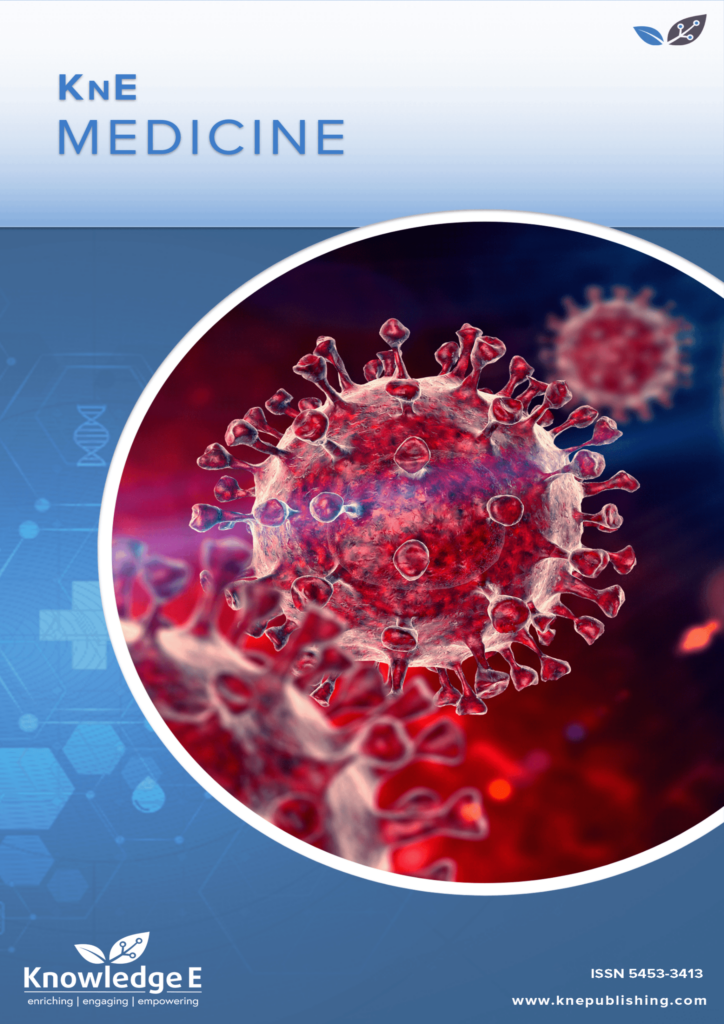
KnE Medicine
ISSN: 2519-125X
The latest conference proceedings on all fields of medicine.
Periodontal Treatment in Patients with Perio-Endo Lesions: A Case Report
Published date: Apr 25 2022
Journal Title: KnE Medicine
Issue title: The International Online Seminar Series on Periodontology in conjunction with Scientific Seminar
Pages: 61-69
Authors:
Abstract:
Background: Periodontal tissue and pulp are interconnected anatomically. In some circumstances, the inflammation may extend from the periodontal region to the pulp or vice versa. In perio-endo lesions, an appropriate treatment plan is required to obtain a predictable and reliable treatment prognosis. The development and progression of these perio-endo lesions can be influenced by many factors such as bacteria, fungi, viruses, trauma, root resorption, perforation and dental malformations. An appropriate treatment plan for perio-endo lesions can provide a good prognosis.
Objective: To describe periodontal treatments performed in patients with perio-endo lesions.
Case Report: A 39-year-old man presented to Hasanuddin University Dental and Oral Hospital with a chief complaint of uncomfortable left posterior maxillary teeth during mastication. Clinical examination showed vital, non-caries, pocket depth of ±9mm on tooth 26. Radiographic examination showed a radiolucent lesion that extended to the apically. Regenerative periodontal treatment was performed using a combination of platelet-rich fibrin (PRF) with demineralized freeze-dried bone xenograft (DFDBX).
Results: During the observation period, pocket depth was reduced, and the pain was absent.
Conclusion: Periodontal inflammation that extends to the pulp tissue can be prevented by regenerative periodontal treatment using a combination of PRF and DFDBX, which shows promising results.
Keywords: endo-perio lesions, periodontal regenerative, periodontal surgery
References:
[1] Newman MG, Takei HH, Klokkevold PR, Carranza FA. Newman and Carranza’s clinical periodontology. 13th ed. Philadelphia: Elsevier; 2019.
[2] Sirgamalia V, Sagar V, Rajababu, Reddy V. Endo-perio Lesion: A case report. International Journal of Clinical and Biomedical Research. 2018;4(2):89-92.
[3] Bonaccorso A, Tripi TR. Endo-period lesion: Diagnosis, prognosis and decisionmaking. Endodontic Practice Today. 2014;8(2):105-127.
[4] Simon JH, Glick DH, Frank AL. The relationship of endodontok-periodontic lesion. Journal of Periodontology. 1972;43:202-205.
[5] Kuka GI, Barut G, Gursoy H. Classification and current treatment options of endoperio lesions. Yeditepe University Faculty of Dentistry, Istanbul; 2016.
[6] Oktawati S. Alveolar bone regeneration after demineralized freeze-dried bone allograft (DFDBA) bone grafting. Indonesian Journal of Dentistry. 2006;14:37-40.
[7] Varughese V, Mahendra J, Thomas AR, Ambalavanan N. Resection and regeneration – A novel approach in treating a perio-endo lesion. Journal of Clinical and Diagnostic Research. 2013;9(3):8-10.
[8] Thahir H, Setiawati D. Regenerative approach in the treatment of grade II furcation: A case report. Journal of Dentomaxillofacial Science. 2019;4(1):53-56.
[9] Wirata IW, Sudimartini LM, Gunawan F. Bahan cangkok demineralized freeze-dried bovine bone graft (DFDBBX) dan hydroxyapatite bovine bone xenograft (HA-BBX). Fakultas Kedokteran Hewan Universitas Udayana, Bali. 2016.
[10] Mendez CAS, Lang NP, Caneva M, Lemus GR, Solano GM, Botticelli D. Comparison of allograft and xenograft used alveolar ridge preservation – A clinical and histomorphometric RCT in humans. Clinical Implant Dental Relat Research. 2017;19:612-613.
[11] Corso MD, Toffler M, and Dohan DM. Use of an autologous leukocyte and platelet rich fibrin (L-PRF) membrane in post avulsion sites: An overview of Choukroun’s PRF. The Journal of Implant & Advanced Clinical Dentistry. 2010;1(9):28-29.
[12] Nagaveni NB, Kumari KN, Poornima P, Reddy S . Management of an endo-period lesion in an immature tooth using autologous platelet-rich fibrin: A case report. Journal of Indian Society of Pedodontics and Preventive Dentistry. 2015;33(1):69-72.